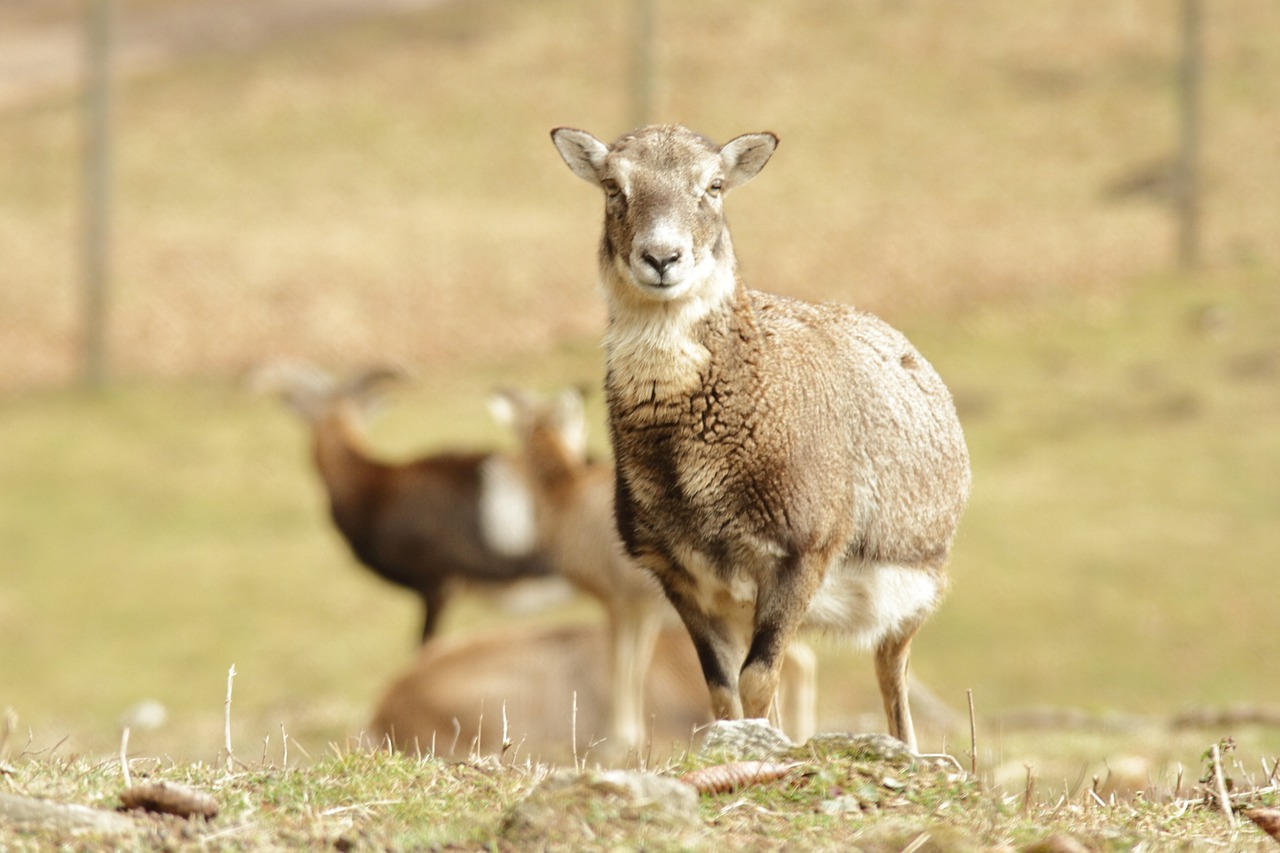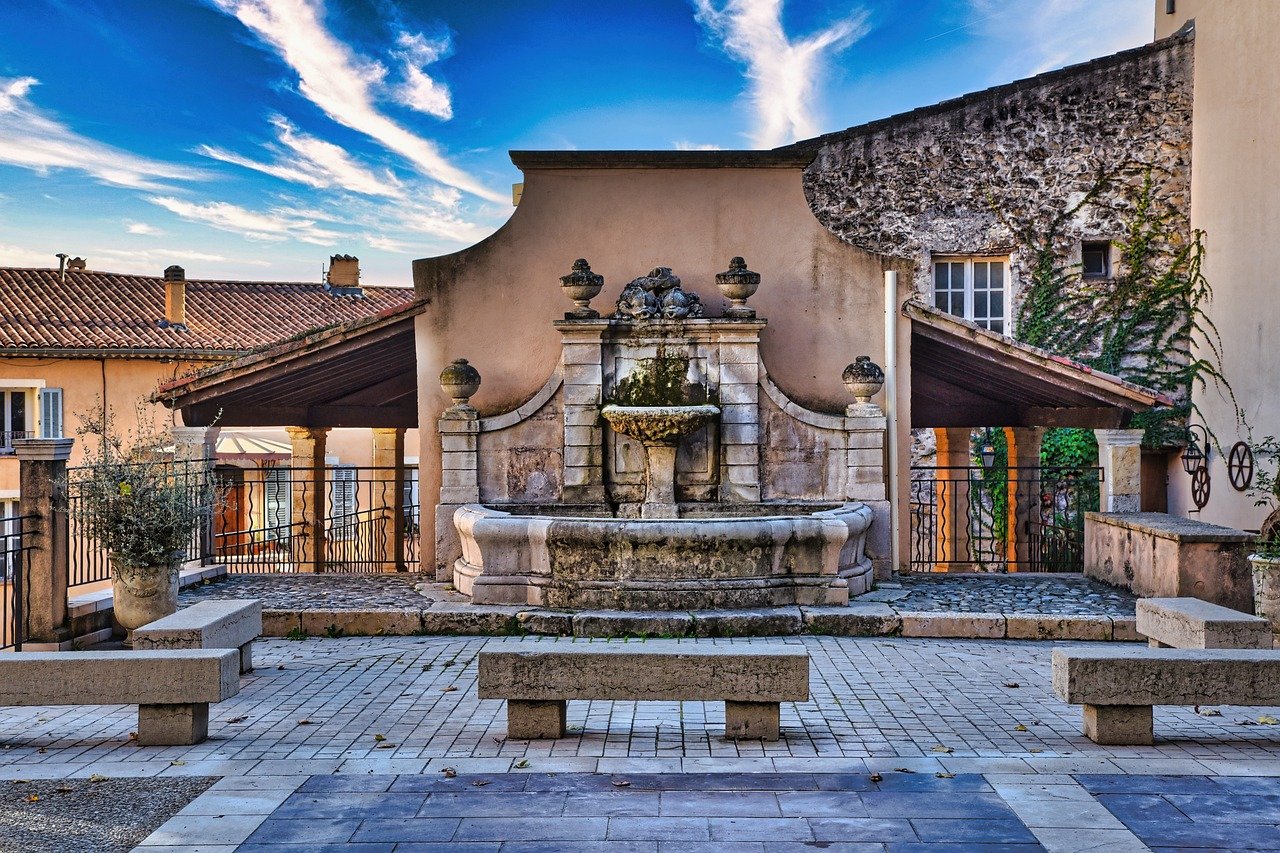Cultural Heritage and Climate Change - Preservation Strategies
Climate change poses a significant threat to the preservation of cultural heritage sites around the world, requiring urgent action and innovative strategies to safeguard these valuable assets for future generations. The impact of changing environmental conditions on historical monuments, ancient ruins, and traditional landmarks cannot be underestimated. It is imperative to understand the profound implications of climate change on cultural heritage and implement effective preservation techniques to ensure their longevity.

Understanding the Impact of Climate Change on Cultural Heritage
Climate change poses a significant threat to our cultural heritage, impacting iconic sites and artifacts around the world. The urgency to address this issue has never been greater, as the effects of climate change continue to accelerate.
Climate change manifests its impact on cultural heritage in various ways. Rising sea levels threaten coastal heritage sites, while extreme weather events like hurricanes and floods can cause irreversible damage to historic buildings and monuments. Additionally, shifts in temperature and precipitation patterns can accelerate the deterioration of archaeological sites and ancient artifacts.
Imagine a historic castle battered by increasingly frequent and intense storms, or a centuries-old painting fading due to rising temperatures. These scenarios illustrate the tangible effects of climate change on our cultural heritage, underscoring the need for proactive preservation efforts.
Moreover, the interconnected nature of cultural heritage and the environment means that the loss of heritage sites can also result in the erosion of communities' identities and traditions. Preserving these sites is not just about safeguarding physical structures but also protecting the stories and memories they hold.

Adapting Preservation Techniques to Climate Challenges
Climate change poses a significant threat to cultural heritage sites around the world, requiring urgent preservation efforts to safeguard these invaluable treasures for future generations.
As the impacts of climate change continue to intensify, traditional preservation techniques may no longer suffice in protecting cultural heritage sites. Innovative strategies and technologies are essential to adapt to the evolving climate challenges and ensure the resilience of these invaluable assets.
One approach to adapting preservation techniques is the integration of climate-resilient materials in restoration projects. By using sustainable and weather-resistant materials, such as eco-friendly coatings and advanced sealants, cultural heritage sites can better withstand the effects of extreme weather events and rising temperatures.
Furthermore, implementing proactive conservation measures, such as installing drainage systems to manage increased precipitation or utilizing solar-powered monitoring devices to track environmental changes, can help mitigate the impact of climate change on heritage sites.
Collaboration between preservation experts, scientists, and local communities is also crucial in developing adaptive strategies. By combining traditional knowledge with scientific innovations, stakeholders can create comprehensive preservation plans that address the specific climate challenges faced by each cultural heritage site.
Moreover, the use of digital technologies, such as 3D scanning and virtual reality simulations, offers new possibilities for documenting and preserving cultural heritage in the face of climate change. These tools not only facilitate the conservation process but also enhance public engagement and awareness of the importance of protecting our shared heritage.
In summary, adapting preservation techniques to climate challenges requires a multidisciplinary approach that embraces innovation, sustainability, and community engagement. By implementing forward-thinking strategies, we can ensure the long-term survival of our cultural heritage in a rapidly changing environment.

Community Engagement in Heritage Conservation
Community engagement plays a vital role in the conservation of cultural heritage, especially in the face of climate change. When local communities are actively involved in the preservation efforts, it not only enhances the sense of ownership but also fosters a deeper connection to the heritage sites. By engaging with the community, heritage conservation initiatives can benefit from local knowledge, traditions, and practices that have been passed down through generations.
Furthermore, community engagement promotes sustainable practices that are essential for the long-term resilience of cultural heritage. Through collaborative efforts, communities can contribute to the development of climate-smart preservation strategies that take into account the specific needs and challenges of each heritage site. This inclusive approach ensures that conservation efforts are not only effective but also culturally sensitive.
One effective way to engage the community in heritage conservation is through educational programs and awareness campaigns. By raising awareness about the importance of preserving cultural heritage in the face of climate change, communities can become advocates for sustainable practices and active participants in conservation initiatives. Educational initiatives can empower individuals to take action and make a positive impact on the preservation of their heritage.
Moreover, community engagement fosters a sense of shared responsibility for the protection of cultural heritage. When local residents are actively involved in conservation projects, they develop a sense of pride and commitment to safeguarding their heritage for future generations. This sense of ownership not only strengthens the resilience of heritage sites but also creates a lasting legacy of community stewardship.

Policy Frameworks for Climate-Resilient Heritage Preservation
Preserving cultural heritage in the face of climate change requires robust policy frameworks that prioritize resilience and sustainability. These frameworks serve as the backbone of efforts to safeguard invaluable cultural assets from the escalating threats posed by a changing climate. By integrating climate considerations into heritage preservation policies, governments and organizations can proactively address the challenges posed by environmental shifts.
One key aspect of climate-resilient heritage preservation policies is the establishment of adaptation strategies that anticipate and mitigate the impacts of climate change on cultural sites. These strategies may involve implementing structural reinforcements, enhancing monitoring systems, and developing emergency response plans to ensure the long-term protection of heritage assets. Additionally, policies can incentivize the adoption of sustainable practices that reduce the carbon footprint of conservation efforts.
Furthermore, policy frameworks play a crucial role in promoting collaboration among various stakeholders involved in heritage preservation. By fostering partnerships between government agencies, heritage organizations, local communities, and research institutions, policies can facilitate the exchange of knowledge, resources, and expertise needed to effectively address the complex challenges posed by climate change.
Effective policy frameworks for climate-resilient heritage preservation also emphasize public engagement and awareness-building initiatives. By involving local communities in decision-making processes and raising awareness about the importance of cultural heritage conservation, policies can garner widespread support for preservation efforts and foster a sense of shared responsibility for protecting heritage sites from environmental threats.
In conclusion, the development of comprehensive and forward-thinking policy frameworks is essential for ensuring the resilience and sustainability of cultural heritage in the face of climate change. By integrating climate considerations, promoting collaboration, and engaging the public, these frameworks can pave the way for effective strategies that safeguard our shared cultural legacy for future generations.

Case Studies: Successes and Challenges
When it comes to preserving cultural heritage in the face of climate change, examining real-world case studies can provide valuable insights into both successful strategies and the challenges encountered. These case studies serve as practical examples of how heritage sites have been impacted by climate change and the efforts made to protect and conserve them.
One notable success story is the Angkor Wat temple complex in Cambodia. This UNESCO World Heritage site faced threats from increased humidity and rainfall due to climate change, leading to the growth of destructive algae on the ancient stone structures. To combat this, a team of experts implemented innovative conservation techniques, including the installation of special drainage systems and the use of environmentally friendly cleaning methods. These efforts have successfully restored and preserved the intricate carvings and architecture of Angkor Wat, ensuring its continued existence for future generations.
On the other hand, the Venice Lagoon in Italy presents a complex challenge in heritage preservation. The historic city is threatened by rising sea levels and flooding, exacerbated by climate change. Despite efforts to implement flood barriers and restoration projects, the delicate balance between conservation and development remains a contentious issue. The unique ecosystem of the lagoon and the architectural masterpieces of Venice continue to face risks, highlighting the ongoing struggle to protect cultural heritage in the midst of environmental changes.
Furthermore, the case of the Great Barrier Reef in Australia showcases the interconnected nature of climate change and heritage preservation. This iconic marine ecosystem has been severely impacted by coral bleaching events caused by warming ocean temperatures. Conservation efforts have focused on reducing pollution, implementing sustainable tourism practices, and monitoring coral health. While progress has been made in certain areas, the challenges of climate change persist, emphasizing the need for continued adaptation and collaboration in safeguarding cultural and natural heritage.
These case studies demonstrate the complexities and nuances involved in preserving cultural heritage in the face of climate change. While successes provide inspiration and valuable lessons, challenges underscore the ongoing need for innovative solutions, community engagement, and global cooperation to ensure the resilience and longevity of our shared heritage.

Collaborative Approaches in Heritage Conservation
Climate change poses a significant threat to cultural heritage sites around the world, necessitating urgent preservation efforts to safeguard these invaluable treasures for future generations. As the impact of climate change becomes more pronounced, innovative strategies and collaborative approaches are essential to mitigate its effects on our shared cultural legacy.
Collaboration is key in the conservation of cultural heritage in the face of climate change. By fostering partnerships between governments, organizations, and local communities, we can effectively address the challenges posed by environmental shifts and ensure the resilience of heritage sites.
Through collaborative efforts, stakeholders can pool resources, expertise, and knowledge to develop comprehensive preservation plans that take into account the specific vulnerabilities of each site. By working together, we can implement adaptive strategies that not only protect cultural heritage from the immediate threats of climate change but also promote long-term sustainability.
Engaging with local communities is crucial in this collaborative approach, as they often hold invaluable traditional knowledge and have a deep connection to the heritage sites in their vicinity. By involving community members in decision-making processes and conservation efforts, we can ensure that preservation strategies are culturally sensitive and sustainable.
Furthermore, partnerships between governments and heritage conservation organizations can facilitate the implementation of policy frameworks that prioritize climate resilience. By integrating climate change considerations into heritage preservation policies, we can create a more robust framework for protecting cultural assets against the unpredictable impacts of a changing climate.
Collaboration also allows for the sharing of best practices and lessons learned from successful preservation projects. By learning from each other's experiences, stakeholders can overcome challenges more effectively and adapt proven strategies to different cultural contexts and environmental conditions.
Ultimately, collaborative approaches in heritage conservation enable us to harness the collective expertise and resources of diverse stakeholders to ensure the preservation of our cultural heritage in the face of climate change. By working together towards a common goal, we can create a sustainable future for our shared past.

Innovative Technologies for Heritage Preservation
In the realm of cultural heritage preservation, technological advancements play a crucial role in safeguarding our shared history from the impacts of climate change. From state-of-the-art monitoring systems to advanced restoration techniques, innovative technologies are revolutionizing the way we protect and conserve heritage sites around the world. One such groundbreaking technology is LiDAR (Light Detection and Ranging), a remote sensing method that uses light in the form of a pulsed laser to measure distances. LiDAR has proven invaluable in creating detailed 3D models of archaeological sites and monuments, allowing experts to analyze and document fragile structures with unparalleled precision.
Moreover, drones have emerged as powerful tools for heritage preservation, offering a bird's-eye view of sites that are otherwise inaccessible or difficult to survey. Equipped with high-resolution cameras and thermal imaging capabilities, drones enable archaeologists and conservationists to conduct thorough inspections and assessments without causing any physical harm to the delicate surroundings. These aerial devices have revolutionized the way heritage sites are monitored, providing valuable data for conservation efforts and emergency response in the face of natural disasters.
Another innovative technology making waves in heritage preservation is Augmented Reality (AR), which overlays digital information onto the real world through a smartphone or tablet. AR applications allow visitors to experience historical sites in a dynamic and interactive manner, enhancing their understanding of the cultural significance and historical context of the place. By merging the physical and digital realms, AR not only engages visitors but also contributes to the preservation and promotion of cultural heritage for future generations.
Furthermore, Building Information Modeling (BIM) has revolutionized the way heritage buildings are documented, analyzed, and restored. By creating virtual 3D models of structures, BIM technology enables conservationists to simulate various restoration scenarios, assess structural integrity, and plan maintenance activities with precision. This digital tool streamlines the conservation process, ensuring that heritage sites are preserved authentically while adhering to sustainable practices and climate-resilient principles.

Educational Initiatives for Climate-Smart Preservation
When it comes to preserving our cultural heritage in the face of climate change, education plays a crucial role. Educational initiatives are essential for promoting climate-smart preservation practices and raising awareness about the importance of safeguarding our heritage for future generations.
One effective educational strategy is the integration of climate change and heritage conservation topics into school curricula. By educating students about the impacts of climate change on cultural heritage, we can instill a sense of responsibility and encourage sustainable practices from a young age.
Furthermore, workshops and training programs for heritage professionals and local communities are valuable tools for disseminating knowledge and best practices in climate-smart preservation. These initiatives provide hands-on training and equip participants with the skills needed to protect and conserve cultural heritage sites effectively.
Collaborative projects between educational institutions, heritage organizations, and local communities can also enhance educational efforts. By working together, different stakeholders can share expertise, resources, and experiences to develop innovative solutions for preserving cultural heritage in a changing climate.
Interactive learning experiences, such as heritage preservation challenges and virtual tours of at-risk sites, can engage the public and inspire action. These initiatives not only educate individuals about the challenges faced by cultural heritage but also empower them to contribute to conservation efforts in meaningful ways.
Moreover, the use of digital platforms and online resources can reach a wider audience and facilitate continuous learning about climate-smart preservation practices. Virtual exhibitions, webinars, and educational videos can effectively communicate the importance of heritage conservation and encourage active participation in preservation initiatives.
Overall, educational initiatives for climate-smart preservation are essential for building a knowledgeable and proactive community dedicated to safeguarding our cultural heritage in the face of climate change. By investing in education and awareness, we can ensure the long-term resilience and sustainability of our valuable heritage for generations to come.
Frequently Asked Questions
- What is the significance of preserving cultural heritage in the face of climate change?
Preserving cultural heritage is crucial as it not only maintains our connection to the past but also serves as a source of identity and pride for communities. Climate change poses a serious threat to these irreplaceable sites, making preservation efforts essential to safeguarding our shared history for future generations.
- How does climate change impact cultural heritage sites?
Climate change can lead to increased erosion, flooding, and extreme weather events that can damage or destroy cultural heritage sites. Rising sea levels, changing temperatures, and natural disasters all contribute to the degradation of these valuable assets, highlighting the urgent need for proactive preservation strategies.
- What role do local communities play in heritage conservation?
Local communities are integral to heritage conservation as they often have valuable knowledge, traditions, and connections to these sites. Engaging with communities not only ensures their active participation in preservation efforts but also fosters a sense of ownership and responsibility towards protecting cultural heritage from the impacts of climate change.
- How can innovative technologies help in heritage preservation?
Innovative technologies such as drones, 3D scanning, and remote sensing can aid in monitoring, documenting, and preserving cultural heritage sites. These tools provide valuable data for conservationists and enable more efficient and effective preservation practices in the face of climate challenges.
- Why is it important to integrate climate considerations into heritage preservation policies?
Integrating climate considerations into heritage preservation policies is essential to ensure the long-term resilience of cultural sites. By incorporating climate-smart practices and adaptive strategies, policymakers can better protect these assets from the adverse effects of climate change and promote sustainable conservation efforts.



















